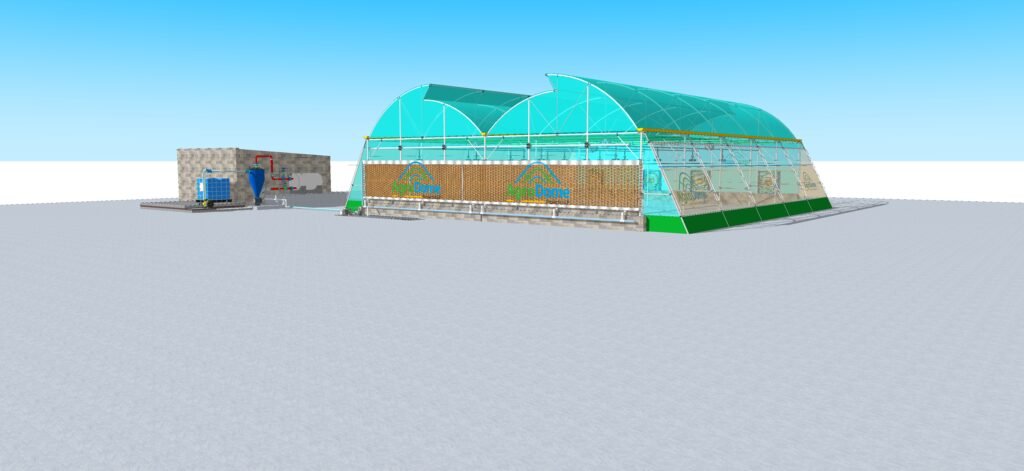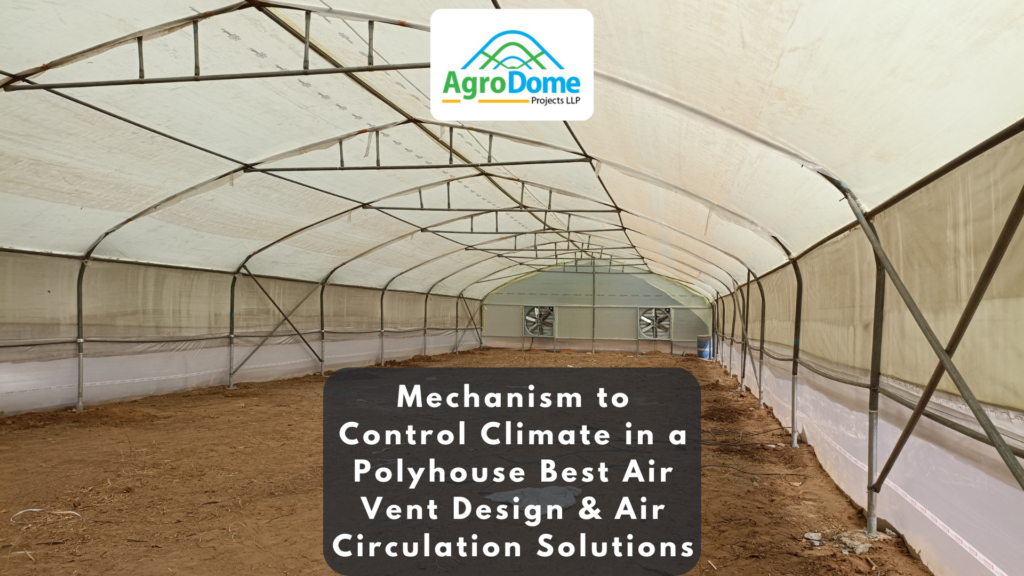Introduction
Polyhouses are essential to modern agriculture, providing a controlled environment for growing crops efficiently. However, maintaining an optimal climate inside a polyhouse is crucial to ensuring plant health and productivity. Proper ventilation, humidity control, and temperature regulation are vital in achieving this goal. This blog will explore the best air vent design for a 7.2-meter tall polyhouse structure and the benefits of using an SS (stainless steel) air circulation fan for improved airflow.
Importance of Climate Control in a Polyhouse
A polyhouse is designed to protect crops from extreme weather conditions, pests, and diseases while enhancing growth by maintaining optimal conditions. Climate control mechanisms help:
- Regulate the temperature to prevent heat stress or cold damage.
- Maintain humidity at desired levels to reduce fungal diseases.
- Ensure proper air circulation to avoid stagnant air pockets.
- Optimize CO₂ levels to promote better photosynthesis.
A well-designed ventilation system plays a critical role in achieving these objectives.

Best Air Vent Design for a 7.2-metre Tall Polyhouse
1. Roof Vents for Hot Air Escape
- Installing continuous roof vents allows hot air to escape efficiently.
- Ridge vents with automated opening systems adjust airflow based on temperature sensors.
- A 50 cm to 1-meter-wide vent running along the length of the roof improves heat dissipation.
2. Side Roll-Up Vents for Cross Ventilation
- Manually or automatically operated roll-up vents along the side walls enhance lateral air exchange.
- Mesh coverings prevent insects while allowing smooth airflow.
- Wind-assisted vent positioning ensures a natural breeze effect for improved cooling.
Role of SS Air Circulation Fans in a Polyhouse
While vent openings allow for natural air movement, air circulation fans play a crucial role in distributing air evenly inside the polyhouse. SS (stainless steel) air circulation fans are the best choice due to their durability, rust resistance, and high-performance capabilities.
Benefits of Using SS Air Circulation Fans
- ✅ Prevents Air Stratification – Ensures even temperature distribution, reducing hot and cold spots.
- ✅ Enhances CO₂ Distribution – Helps plants absorb carbon dioxide efficiently for improved growth.
- ✅ Reduces Humidity Levels – Prevents excess moisture accumulation, minimizing fungal diseases.
- ✅ Corrosion Resistance – Stainless steel construction ensures longevity in humid environments.
- ✅ Energy Efficient – Consumes low power while maintaining optimal airflow.
Best Placement for Air Circulation Fans
- Install fans at 5-6 feet height to prevent direct impact on plants.
- Position fans at regular intervals (every 10-12 meters) for uniform airflow.
- Use oscillating fans to cover a wider area and avoid stagnant zones.
- Align fans with side vents to facilitate natural airflow patterns.
Conclusion
A well-designed air vent system and SS air circulation fans significantly enhance climate control in a 7.2-metre tall polyhouse. By combining roof, side, and exhaust vents with strategically placed fans, growers can create an optimal microclimate for their crops, ensuring higher yields and better-quality produce.
At AgroDome Projects LLP, we specialize in designing and implementing advanced climate control solutions for polyhouses. Contact us today to learn how we can help optimize your polyhouse for maximum efficiency!

